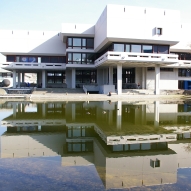Zusammenfassung
Background: Kidney injury is a complication among children undergoing liver transplantation (pLTx). Cystatin C serum con- centration seems to be superior to creatinine-based determination of kidney injury in adults and children. Nearinfrared spectroscopy (NIRS) technology provides non-invasive and real-time measurement of renal tissue oxygenation. Here, we compared renal tissue oximetry (rSrO(2)) ...
Zusammenfassung
Background: Kidney injury is a complication among children undergoing liver transplantation (pLTx). Cystatin C serum con- centration seems to be superior to creatinine-based determination of kidney injury in adults and children. Nearinfrared spectroscopy (NIRS) technology provides non-invasive and real-time measurement of renal tissue oxygenation. Here, we compared renal tissue oximetry (rSrO(2)) with conventional diagnostic criteria cystatin C and creatinine concentration in children undergoing pLTx. Material/Methods: rSrO(2) was measured intraoperatively in children undergoing pLTx over the left kidney, and was statistically com- pared with pre- and postoperative serum creatinine and cystatin C concentrations. Results: rSrO(2) was affected by hemoglobin concentration, bilirubin concentration, and FiO(2). Statistical analysis dem- onstrated that rSrO(2) was significantly reduced in children with preoperative pathologic increased cystatin C concentrations compared to children without (63.7 +/- 4.3 vs. 53.4 +/- 4.9, p<0.05). We did not detect a significant difference in rSrO(2) between children who developed postoperative renal impairment, either determined by increased postoperative cystatin C concentration, creatinine concentration, or the pRIFLE criteria. lntraoperative increase or decrease in rSrO(2) did not predict the development of postoperative kidney injury. Conclusions: In children with liver failure undergoing pLTx, a preoperative decrease in rSrO(2) indicates compromised renal function. However, intraoperative rSrO(2) is not predictive of postoperative kidney injury.





 Altmetric
Altmetric